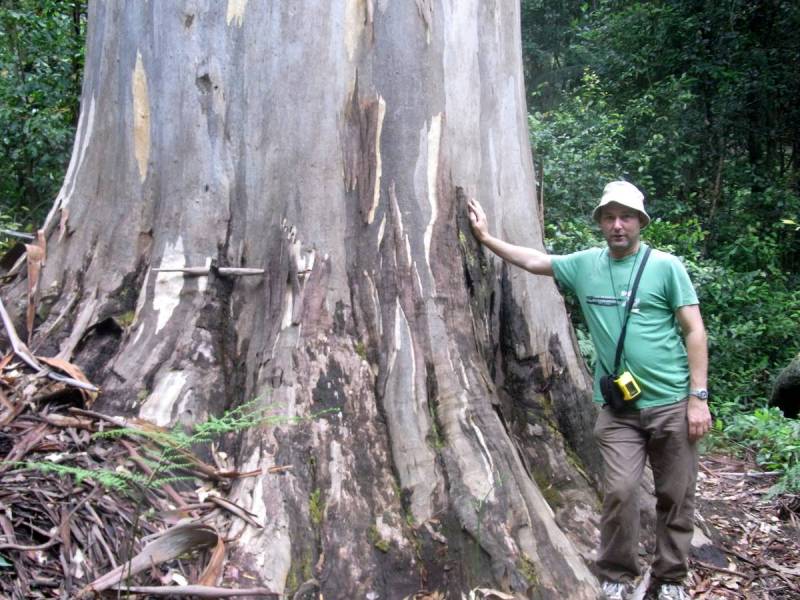Distinguishing features
It grows as a straight and tall forest tree. In less optimal sites, it may be restricted to 20 or 30 m and have a thicker trunk and more branching crown.
The trunk has smooth pale grey or cream bark with a 'skirt' of rougher greyish or brownish bark at the base. The dull dark green lanceolate leaves are arranged alternately along the stems and are 8–13 cm long by 2–3.5 cm wide. The upper leaf surface is darker than underneath. The white flowers appear in March and April, and are arranged in groups of seven to eleven in umbellasters.
The broad and rounded juvenile leaves are 6–15 cm long by 4.5–8.5 cm wide. They can appear in mature foliage and canopy and give the tree crown a distinctive appearance. (Wikipedia)
Size
- Up to 6500 cm (Height)
Synonyms
Distribution
Distribution and habitat preferences
They are most famously seen at the Blue Gum Forest, in Blue Mountains National Park, and by drivers on the Mooney Mooney Bridge on the main road north from Sydney.
It is found in two disjunct populations, the southern range is from Thirlmere to Broke, near Singleton, while the northern range is from Armidale on the Northern Tablelands through to the D'aguilar Range west of Brisbane.
It is a dominant tree in tall forests in sheltered valleys where there is plenty of moisture, on clay or loam soils, and alluvial sands, although also grows on more elevated areas. (Wikipedia)



